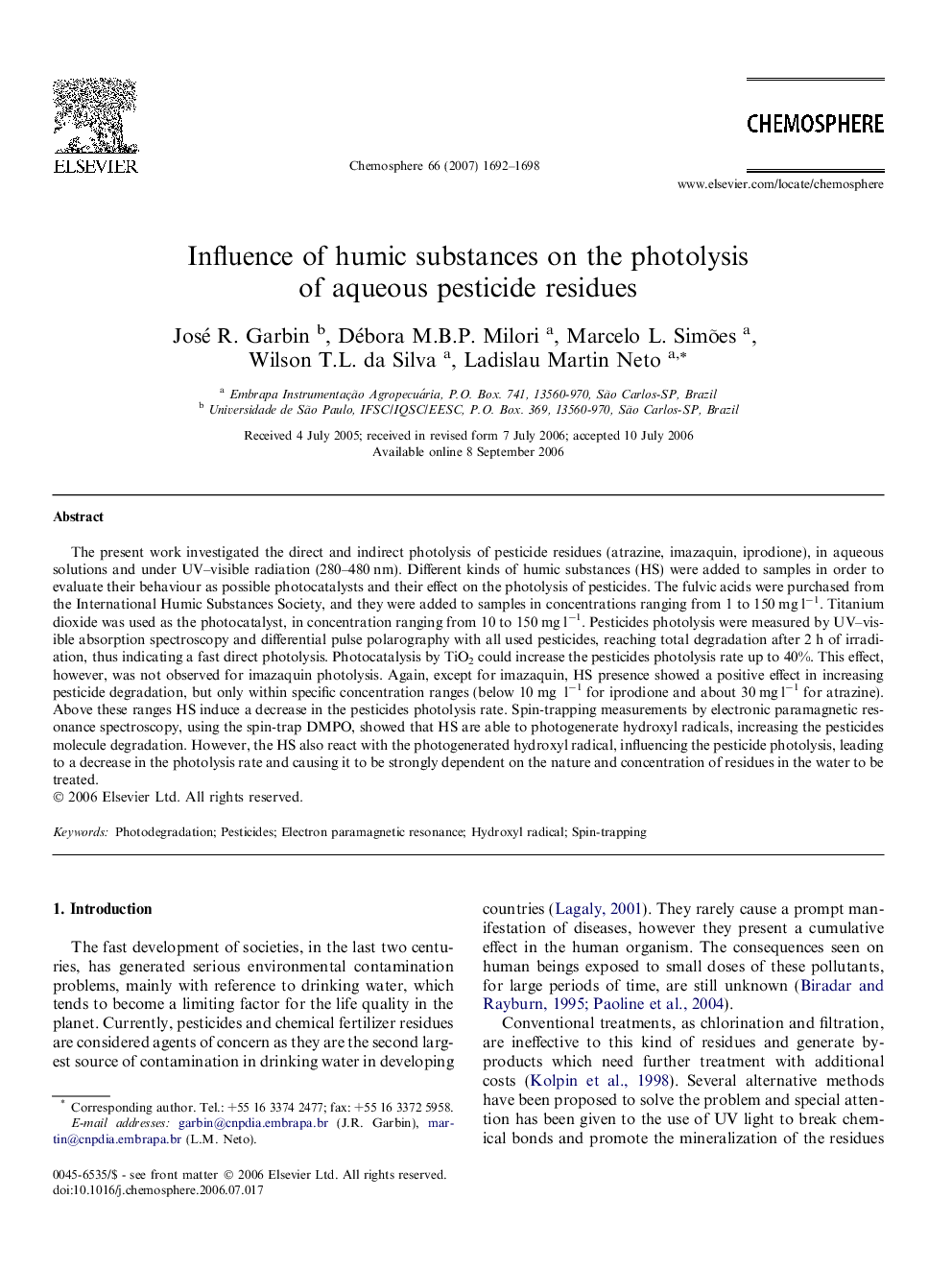| کد مقاله | کد نشریه | سال انتشار | مقاله انگلیسی | نسخه تمام متن |
|---|---|---|---|---|
| 4415414 | 1307746 | 2007 | 7 صفحه PDF | دانلود رایگان |

The present work investigated the direct and indirect photolysis of pesticide residues (atrazine, imazaquin, iprodione), in aqueous solutions and under UV–visible radiation (280–480 nm). Different kinds of humic substances (HS) were added to samples in order to evaluate their behaviour as possible photocatalysts and their effect on the photolysis of pesticides. The fulvic acids were purchased from the International Humic Substances Society, and they were added to samples in concentrations ranging from 1 to 150 mg l−1. Titanium dioxide was used as the photocatalyst, in concentration ranging from 10 to 150 mg l−1. Pesticides photolysis were measured by UV–visible absorption spectroscopy and differential pulse polarography with all used pesticides, reaching total degradation after 2 h of irradiation, thus indicating a fast direct photolysis. Photocatalysis by TiO2 could increase the pesticides photolysis rate up to 40%. This effect, however, was not observed for imazaquin photolysis. Again, except for imazaquin, HS presence showed a positive effect in increasing pesticide degradation, but only within specific concentration ranges (below 10 mg l−1 for iprodione and about 30 mg l−1 for atrazine). Above these ranges HS induce a decrease in the pesticides photolysis rate. Spin-trapping measurements by electronic paramagnetic resonance spectroscopy, using the spin-trap DMPO, showed that HS are able to photogenerate hydroxyl radicals, increasing the pesticides molecule degradation. However, the HS also react with the photogenerated hydroxyl radical, influencing the pesticide photolysis, leading to a decrease in the photolysis rate and causing it to be strongly dependent on the nature and concentration of residues in the water to be treated.
Journal: Chemosphere - Volume 66, Issue 9, January 2007, Pages 1692–1698